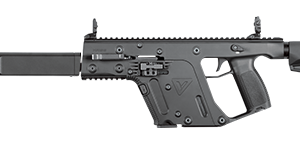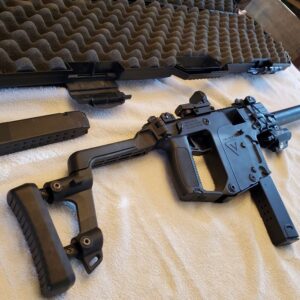NAGANT 1895 7.62X38R REVOLVER 1943
$420.00 Original price was: $420.00.$380.00Current price is: $380.00.
NAGANT 1895 7.62X38R REVOLVER 1943

The 3-line rifle M1891 is popularly known in the West as the Mosin Nagant and in Russia as the Mosin nagant rifle. The mosin nagant for sale is a five-shot, bolt-action, internal magazine–fed, military rifle. Also, It is one of the most mass-produced military bolt-action rifles in history. Hence it has over 37 million units having been made since its inception in 1891. It is primarily found chambered for its original 7.62×54mmR
NAGANT 1895 7.62X38R REVOLVER 1943
The Mosin nagant 3-line rifle, Model 1891 was adopted by the Russian military in 1891. There have been several variations from the original rifle, the most common being the M1891/30 (commonly referred to as “the 91/30” by shooters). Also, Some details were borrowed from the mosin Nagant for sale design.Furthermore, the 1891 Mosin nagant rifle for sale uses two front-locking lugs to lock up the action.
NAGANT 1895 7.62X38R REVOLVER 1943
However, the Mosin’s lugs lock in the horizontal position, whereas the Mauser locks vertically. The Mosin nagant bolt body is also multi-piece whereas the Mauser is one piece. Like the Mauser, the Mosin nagant uses a blade ejector mounted in the receiver. The Mosin nagant bolt is removed by simply pulling it fully to the rear of the receiver and squeezing the trigger. Meanwhile the Mauser has a bolt stop lever separate from the trigger
NAGANT 1895 7.62X38R REVOLVER 1943
Like the Mauser, the bolt lift arc on the Mosin–Nagant is 90 degrees, versus 60 degrees on the Lee–Enfield. Furthermore, the Mauser bolt handle is at the rear of the bolt body. It locks behind the solid rear receiver ring. Hence the Mosin nagant bolt handle is similar to the Mannlicher: The rifling of the Mosin nagant for sale barrel is right turning (clockwise looking down the rifle) 4-groove with a twist of 1:9.5″ or 1:10″. Also the 5-round fixed metallic magazine can either be loaded by inserting the cartridges singly, or more often in military service, by the use of 5-round stripper
NAGANT 1895 7.62X38R REVOLVER 1943
Nagant Revolver, 1895, in excellent condition. From 1895 through WWII, he served in the Rissian army. The Tula Star indicates that it was made in Russia. With a recessed bullet, it’s chambered for a 7.62X38R cartridge. When the cylinder is cocked, the rear of the forcing cone enters the chamber and the cartridge case mouth enters the forcing cone, essentially reducing the typical revolver cylinder barrel gap and increasing the muzzle velocity of the discharged bullet. Design is one of a kind. Extraction of fired cases is accomplished by loosening the extractor rod, moving it forward, twisting it to align with the chambers, and forcing cartridges out, similar to a Colt or Ruger single action rifle.
NAGANT 1895 7.62X38R REVOLVER 1943
With a recessed bullet, it’s chambered for a 7.62X38R cartridge. When the cylinder is cocked, the rear of the forcing cone enters the chamber and the cartridge case mouth enters the forcing cone, essentially reducing the typical revolver cylinder barrel gap and increasing the muzzle velocity of the discharged bullet. Design is one of a kind. Extraction of fired cases is accomplished by loosening the extractor rod, moving it forward, twisting it to align with the chambers, and forcing cartridges out, similar to a Colt or Ruger single action rifle.
The Russian M1895 Nagant revolver is one of the mechanically intriguing guns that is commonly accessible in the United States for a reasonable price (or was until lately, it appears). The Imperial Russian government adopted it in 1895, replacing the Smith & Wesson No.3 as the service revolver, and it would serve in the hands of the Red Army into World War II.
NAGANT 1895 7.62X38R REVOLVER 1943
The Russian government intended to manufacture the M1895 revolvers locally, as it did with its other standard-issue weapons. However, when the Nagant was officially adopted, the major Russian arsenals were already overburdened with the comparatively new M1891 rifle, so Nagant in Lieg produced the first 20,000 revolvers.
Nagant in Liege, Belgium, created them. Space had been available in 1898 for manufacture to begin at the Tula arsenal, where they would be produced until 1945. (Ishevsk put the Nagant revolver into production as well during WWII).
A 7-shot, double action revolver chambered for 7.62x38mm is the most popular type available in the United States today. The bullet is plunged considerably below the case mouth on that cartridge, which has a very lengthy case.
When the Nagant is fired, the cylinder moves forward, allowing the case mount to extend into the barrel and seal the cylinder gap, somewhat increasing muzzle velocity. In contrast to practically all other revolvers (which cannot be suppressed), the Nagant may be used efficiently with a suppressor.
NAGANT 1895 7.62X38R REVOLVER 1943
Russian firearms are a mix of primitive, eccentric, utilitarian, out-of-date, and possibly a decent purchase. The Mosin-Nagant rifle, as well as the later AK-47, aren’t particularly attractive. Neither would the Makarov pistol from the James Bond films, which is essentially a Walther PPK knock-off.
The m1895 Nagant revolver, a handgun that was both inventive and outmoded at the same time, is another intriguing firearm in Russia’s 20th-century armory. A handgun that piqued my curiosity so much that I had to buy it twice.

The 1895 Nagant has a practically unequaled service career, despite its basic appearance. The narrative begins in the early 1890s, when authoritarian Russia sought a replacement for its 44 caliber Smith & Wesson break-top revolvers. Emile and Leon Nagant, who were well-known to the Czar for their work on the M91 Mosin-Nagant rifle’s magazine system, had a solution in mind.
NAGANT 1895 7.62X38R REVOLVER 1943
Although Nagant revolvers had already been accepted by a number of countries, the Czar was impressed by the improvements made to this new Russian revolver. The usage of a gas-seal cartridge in particular. This new revolver was initially made in two models: a double action officer’s model and a single action model for the lower ranks, both of which were taken up in 1895.
The Nagant revolver would be Russia’s principal sidearm throughout World War I, and it was arguably the gun used to assassinate the Czar himself as the Bolsheviks tightened their grip on the country. The two Russian arsenals, Ishvesk and Tula, produced just the double act in true Communist egalitarianism.
NAGANT 1895 7.62X38R REVOLVER 1943

The 3-line rifle M1891 is popularly known in the West as the Mosin Nagant and in Russia as the Mosin nagant rifle. The mosin nagant for sale is a five-shot, bolt-action, internal magazine–fed, military rifle. Also, It is one of the most mass-produced military bolt-action rifles in history. Hence it has over 37 million units having been made since its inception in 1891. It is primarily found chambered for its original 7.62×54mmR.NAGANT 1895 7.62X38R REVOLVER 1943
NAGANT 1895 7.62X38R REVOLVER 1943
The Mosin nagant 3-line rifle, Model 1891 was adopted by the Russian military in 1891. There have been several variations from the original rifle, the most common being the M1891/30 (commonly referred to as “the 91/30” by shooters). Also, Some details were borrowed from the mosin Nagant for sale design.Furthermore, the 1891 Mosin nagant rifle for sale uses two front-locking lugs to lock up the action.
NAGANT 1895 7.62X38R REVOLVER 1943
However, the Mosin’s lugs lock in the horizontal position, whereas the Mauser locks vertically. The Mosin nagant bolt body is also multi-piece whereas the Mauser is one piece. Like the Mauser, the Mosin nagant uses a blade ejector mounted in the receiver. The Mosin nagant bolt is removed by simply pulling it fully to the rear of the receiver and squeezing the trigger. Meanwhile the Mauser has a bolt stop lever separate from the trigger
NAGANT 1895 7.62X38R REVOLVER 1943
Like the Mauser, the bolt lift arc on the Mosin–Nagant is 90 degrees, versus 60 degrees on the Lee–Enfield. Furthermore, the Mauser bolt handle is at the rear of the bolt body. It locks behind the solid rear receiver ring. Hence the Mosin nagant bolt handle is similar to the Mannlicher: The rifling of the Mosin nagant for sale barrel is right turning (clockwise looking down the rifle) 4-groove with a twist of 1:9.5″ or 1:10″. Also the 5-round fixed metallic magazine can either be loaded by inserting the cartridges singly, or more often in military service, by the use of 5-round stripper. NAGANT 1895 7.62X38R REVOLVER 1943
NAGANT 1895 7.62X38R REVOLVER 1943
Nagant Revolver, 1895, in excellent condition. From 1895 through WWII, he served in the Rissian army. The Tula Star indicates that it was made in Russia. With a recessed bullet, it’s chambered for a 7.62X38R cartridge. When the cylinder is cocked, the rear of the forcing cone enters the chamber and the cartridge case mouth enters the forcing cone, essentially reducing the typical revolver cylinder barrel gap and increasing the muzzle velocity of the discharged bullet. Design is one of a kind. Extraction of fired cases is accomplished by loosening the extractor rod, moving it forward, twisting it to align with the chambers, and forcing cartridges out, similar to a Colt or Ruger single action rifle.
NAGANT 1895 7.62X38R REVOLVER 1943
With a recessed bullet, it’s chambered for a 7.62X38R cartridge. When the cylinder is cocked, the rear of the forcing cone enters the chamber and the cartridge case mouth enters the forcing cone, essentially reducing the typical revolver cylinder barrel gap and increasing the muzzle velocity of the discharged bullet. Design is one of a kind. Extraction of fired cases is accomplished by loosening the extractor rod, moving it forward, twisting it to align with the chambers, and forcing cartridges out, similar to a Colt or Ruger single action rifle.
NAGANT 1895 7.62X38R REVOLVER 1943
NAGANT 1895 7.62X38R REVOLVER 1943

NAGANT 1895 7.62X38R REVOLVER 1943
NAGANT 1895 7.62X38R REVOLVER 1943
NAGANT 1895 7.62X38R REVOLVER 1943
NAGANT 1895 7.62X38R REVOLVER 1943
NAGANT 1895 7.62X38R REVOLVER 1943
NAGANT 1895 7.62X38R REVOLVER 1943
NAGANT 1895 7.62X38R REVOLVER 1943

Reviews
There are no reviews yet.
Related products
Mosin Nagant For Sale
Mosin Nagant For Sale
Mosin Nagant For Sale
CZ Scorpion
CZ Scorpion
Kriss Vector For Sale
Kriss Vector For Sale
Mosin Nagant For Sale









Be the first to review “NAGANT 1895 7.62X38R REVOLVER 1943”